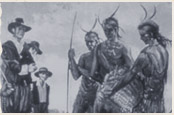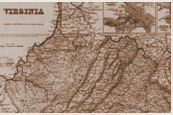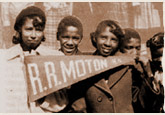Grown of International Markets: Asian Immigration to Hawaii
Pacific University, Oregon: Journal of History and Computing Web Ring
Growth of International Markets: The Story of a Nisei
Pacific University, Oregon: Journal of History and Computing Web Ring
Description: These linked digital resources relate to the growth of the international sugar market in Hawaii in the years following the Civil War. The United States' first significant international market venture came about because the Hawaiian sugar market was organized by American immigrants to the islands and fueled by American economic interests. Given this background, students should be asked to think about and draw their own inferences about the importance of Hawaii to the United States' late nineteenth-century foreign policy. These digital resources allow students to explore the context and themes of the Hawaiian sugar plantation era by focusing on experiences of Asian immigrants who came there to find work. Students are encouraged to ponder both the reasons behind the formation of Hawaii's polyglot immigrant culture and the problems that may have resulted because of it.
Teaching Tips:
"Do Now" Suggestion
- Students could brainstorm a list of events connected to Hawaii's history, or a list of reasons "pro and con" for Hawaii joining the United States, from a native Hawaiian's perspective. The teacher could follow the students' discussion with a guided analysis of the text and images on this website.
- As a follow-up to the "Do Now" suggestion, the students could create a "KWL chart" (What I Know About the Topic / What I Want to Know / What I Learned), with the "Know" section consisting of items from the "Do Now" discussion. Students could use the website and other references to complete the "What I Want to Know" and begin the "What I Learned" sections of the chart. As students discuss their findings, other students can clarify and add to their KWL chart. Students could follow up the "Do Now" suggestion by having groups of students identify difficulties that immigrants to Hawaii faced in the following areas: (a) language difficulties, (b) economic challenges, (c) racial discrimination. For each of these categories, students could explain the difficulty and give specific examples of how it was experienced, identify specific groups of immigrants who experienced the hardship, and describe how the immigrants ultimately adjusted to the obstacles they faced. Students could share the information with the class in a short presentation. Students could use the information on this site to compare and contrast "wage slaves" in Hawaii with plantation slaves in the antebellum United States. Areas of comparison and contrast could include the ethnic backgrounds, rights and treatment, time periods, and explanation of the institution's abolition in each case. Students could then use the comparison and contrast exercise to write a short paper on the similarities and differences between forced labor in both areas.



